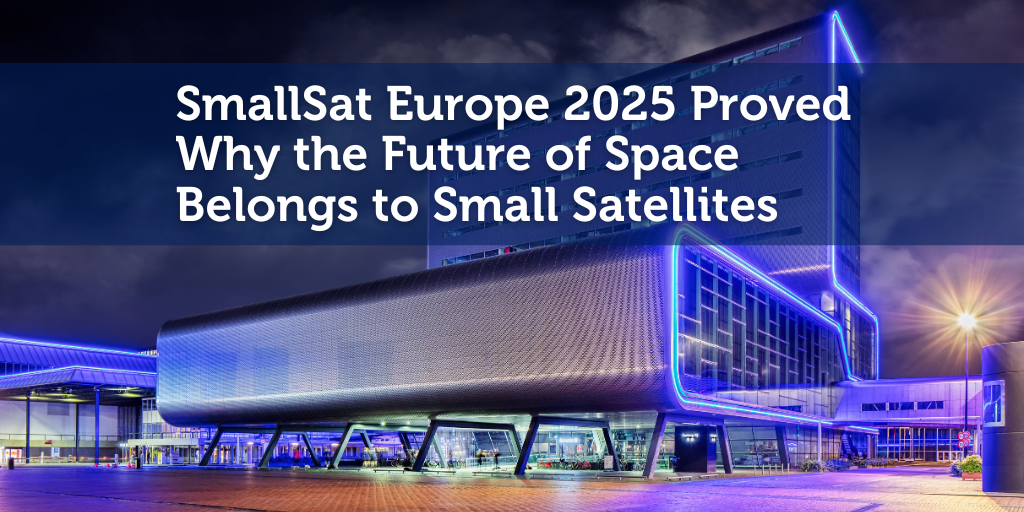 The inaugural SmallSat Europe conference concluded at the end of May in Amsterdam, and it left no doubt: small satellites are commanding big attention. Held at the Amsterdam RAI convention center, the two-day event brought together more than 1,200 attendees and 107 exhibitors for an immersive look at one of the fastest-growing sectors in aerospace. Among those in attendance was Chris Steph of Radeus Labs, whose on-the-ground perspective offered valuable insight into how Satcom innovations are evolving in real time.
The inaugural SmallSat Europe conference concluded at the end of May in Amsterdam, and it left no doubt: small satellites are commanding big attention. Held at the Amsterdam RAI convention center, the two-day event brought together more than 1,200 attendees and 107 exhibitors for an immersive look at one of the fastest-growing sectors in aerospace. Among those in attendance was Chris Steph of Radeus Labs, whose on-the-ground perspective offered valuable insight into how Satcom innovations are evolving in real time.
With a schedule packed across four stages, the conference struck a balance between deep technical exploration and high-level business strategy. Whether you were focused on satellite design, communication infrastructure, orbital debris mitigation, or regulatory frameworks, SmallSat Europe delivered.
The Market Is No Longer Emerging—It’s Here
A recurring theme across sessions was just how mature the SmallSat industry has become. Market projections vary, but most forecasts agree: the sector could surpass a trillion dollars in value by the 2030s. And with launch costs decreasing and use cases multiplying—from Earth observation to interplanetary missions—the momentum is unmistakable.
One hot topic? Defining what actually counts as a “small satellite.” Depending on whom you ask, payloads up to 1,200 kg are still considered “small,” a classification that sparked lively debates on stage.
Communication Took Center Stage
Perhaps the most cross-cutting discussion point was satellite communication. Chris Steph and others observed how much attention this topic received throughout the show. As presenters emphasized, the real value of SmallSats lies not just in data collection—but in how that data is moved, shared, and monetized. With increasing demand for low-latency, high-throughput connections in VLEO and LEO orbits, the Satcom landscape is evolving quickly.
From satellite-to-Earth links to mesh networks between orbital platforms, communication is no longer just a subcomponent—it’s a strategic differentiator.
A Meeting Ground for Engineers, Executives, and the Next Generation
The event drew a diverse audience. Engineers came to showcase new technologies and collaborate with peers. Executives used the exhibition floor to scope new partnerships and market trends. And students took advantage of the opportunity to gain firsthand insight from industry veterans, setting themselves up for future success in space tech careers.
Looking Ahead: Your Satcom Strategy Starts Here
If you’re planning the ground segment side of your smallsat project, now’s the time to connect. The earlier we’re brought in, the more we can optimize performance, streamline integration, and help you avoid costly delays down the line.
Chris Steph of Radeus Labs was on-site at SmallSat Europe and brings back firsthand insights from leading Satcom innovators across the globe. From technical considerations to strategic planning, Chris can help you evaluate your options and move forward with clarity.
👉 Book a call with Chris Steph to talk Satcom, strategy, and what comes next for your team.






 Last week, the Radeus Labs team joined the global AI community in Washington, D.C. for the
Last week, the Radeus Labs team joined the global AI community in Washington, D.C. for the